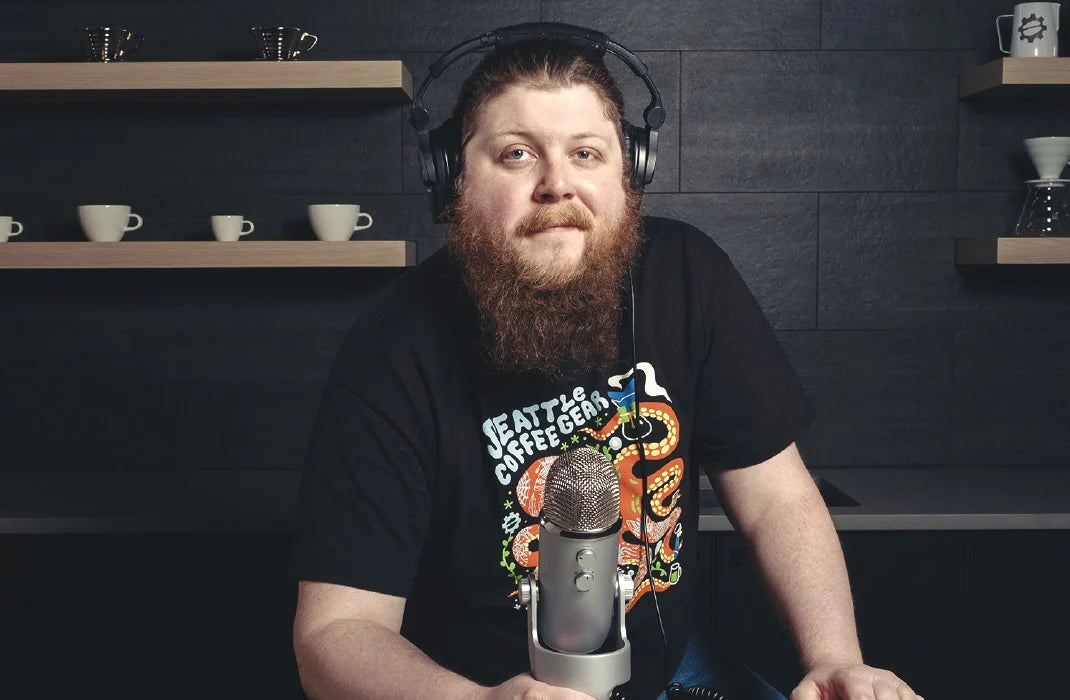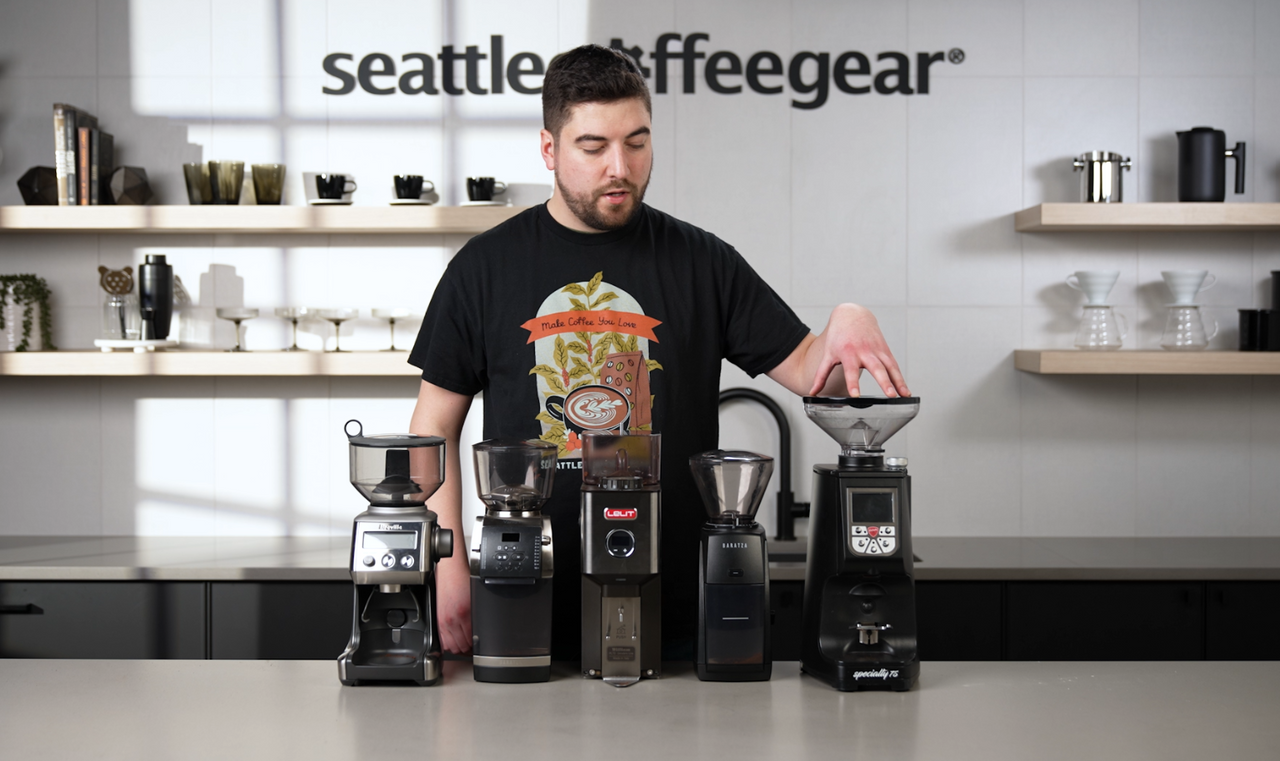Continuing on from our article about the features you need in a home espresso machine, we wanted to provide some similar advice for the grinder you’ll be pairing with your machine. To do this, we’ll be taking a look at a few different options for each feature.
Dosing
One of the most important pieces of the espresso puzzle is getting the right coffee dose. You need accuracy here because this is one of the variables that you can most easily control in the brewing process. To make this step easier, many espresso grinders have a way to automate the volume of coffee ground for each shot.
Some grinders, like the Eureka Mignon Silenzio 55 have a simple potentiometer dial that offers imprecise time measurement. This may sounds unworkable, but this type of timer works fine once you get it dialed in.
Other grinders, like the Baratza Sette 270Wi actually have a scale built into the grinder itself, which gives you precise measurements. This means that you can actually select the exact volume that you want and the grinder will dispense that amount of coffee grounds. This is an excellent time saving feature and it works well on the Sette 270WI, but some grinders with scales can be a bit finicky, and they usually see a jump in price as this is definitely a premium feature.
Finally, some grinders have a digital display that you can select a precise dose time on, such as the Lelit William. This is kind of a happy medium between the two styles discussed above, as you get more precision than an abstract dial, but timers can be more reliable than a scale system.
If your grinder is a simple push button with no dosing options, fear not! You can always get a scale to dose with, the process might just be a bit more wasteful and time consuming as you grind, weigh, grind more, weigh, then discard some grounds, but you can make it work.
Noise
Noise levels might be a key consideration for you depending on your living situation. If you live with family or roommates it may be important to consider how loud your espresso process is. The Silenzio mentioned above, as you might have guessed, is a very quiet grinder. On the flip side, the Sette 270Wi is much louder, but also grinds faster, so it might be preferred.
Much of the grinder’s noise level is determined by case design. Grinders like the Silenzio have insulating material and a closed body, keeping the moving parts contained and quieter. The Sette on the other hand is more open with less insulation. Louder grinders aren’t always a bad thing, but it’s worth considering if you have people who will be bothered by the noise.
Burr Type and Size
This one is a tricky one, as there’s no perfect answer for which burrs you really need for your grinder, but it’s worth understanding.
The most common kind of burrs for more affordable grinders is a conical design. The Baratza Encore is a good example of this type of grinder. These grinders feature an outer ring and an inner cone that rotates to grind the espresso. This creates microscopic irregularities that some coffee drinkers feel give coffee a bit more body. The other type of burr typically found in commercial grinders (but plenty of home grinders have these too) is the flat burr, which a grinder like the Eureka Atom 75 features. Flat burrs create more regular grounds that are a bit easier to dial in for espresso.
Another factor is burr size, which largely relates to grind speed. Larger burrs have more surface area that can grind more coffee at once, leading to quicker grind times. Numbers in names like “Atom 75” and “Silenzio 55” typically refer to the size of the burrs in milimeters.
Adjustment Type
Coffee grinders have either a stepped or stepless grind adjust. Stepped grinders have delineated steps on grind adjustment with finite steps. These tend to be a bit easier to understand as you can look up suggestions for grind setting for different beans. This is especially helpful for slow brew methods where precision matters a bit less. It’s worth noting that a grinder you’re using for slow brew and espresso should be stepped so that you can easily switch between settings.
Stepless grinders, on the other hand, have a screw that moves the burrs through infinite distances using a dial with no steps. This means that you can precisely dial in the exact setting you want for a given espresso bean, but you should not adjust that setting again until you switch beans, as the dialing in process will be a bit trickier.
We hope that these tips have helped you make a decision on your coffee or espresso grinder. To get some more information and see some of these grinders in action check out our video below! We’d love to hear from you in the comments as well.


